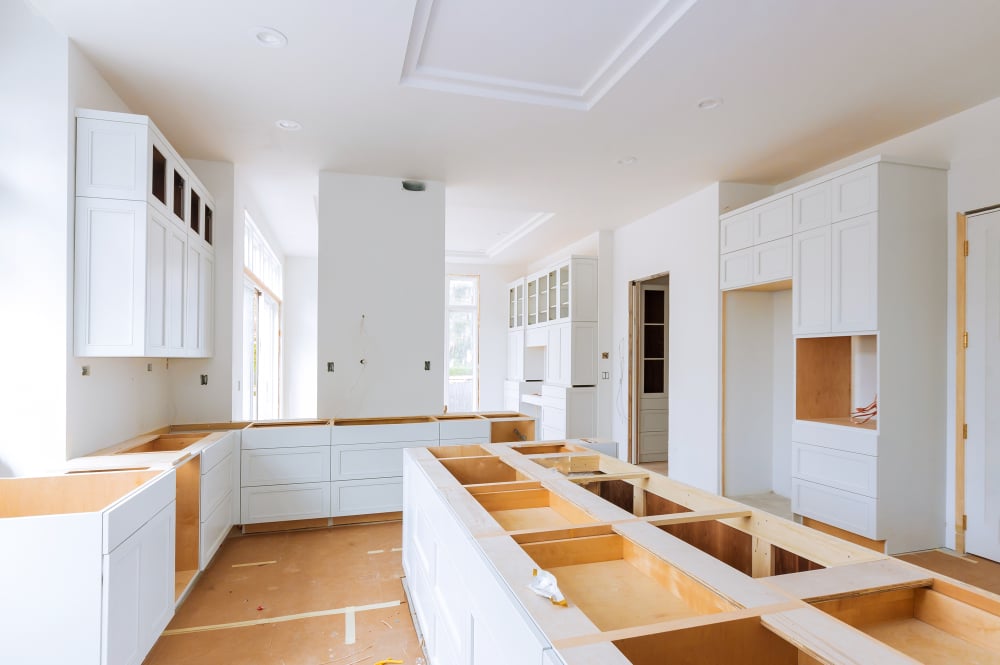How Often Should You Schedule Pressure Washing For Your Home?

Maintaining a home’s exterior is essential for preserving its curb appeal, structural integrity, and overall value. Over time, dirt, mold, mildew, algae, and other contaminants accumulate on surfaces, leading to discoloration and potential damage. Pressure washing can effectively remove these buildups, but determining the right frequency for this service depends on several factors.
Read on to learn how often you should schedule pressure washing for your home.
*This post may contain affiliate links and I’ll earn a commission if you shop through them. You can read my full disclosure here.
Factors Influencing Pressure Washing Frequency
The ideal schedule for power washing varies based on location, climate, and the materials used in a home’s construction. Consulting a professional exterior cleaning company can help you develop a tailored maintenance plan.
However, below are key considerations that influence how often pressure washing should be performed.
Climate and Weather Conditions
Homes in humid or rainy regions are more prone to mold, mildew, and algae growth. Coastal areas may also experience salt buildup, which can corrode surfaces. In such environments, pressure washing every 6–12 months is recommended. Conversely, drier climates may allow for less frequent
Type of Exterior Surfaces
Different materials require varying levels of care. These include:
Vinyl Siding
Due to its static-prone surface, the vinyl siding attracts dust, pollen, and airborne pollutants. Annual pressure washing can help remove these deposits before they lead to discoloration or mildew growth, preserving the material’s appearance and preventing the need for more intensive surface
Brick and Stone
Brick and stone surfaces absorb dirt and pollutants deep within their pores, making stains less visible initially. However, their durable nature allows for extended 1.5–2-year
Wood Decks and Fences
Wood surfaces like decks and fences can absorb moisture, creating ideal conditions for mold growth and wood rot. Pressure washing every 6-12 months can help remove these destructive elements while preserving the wood’s structural integrity and appearance. Regular
Concrete Driveways and Walkways
Concrete driveways and walkways can frequently develop stubborn stains from vehicles and slippery mildew in shaded areas. Biannual washing (spring and fall) can effectively remove these hazards while preventing permanent discoloration and maintaining safe, clean walking concrete surfaces year-round.
Proximity to Trees and Foliage
Homes near trees face increased exposure to organic debris, including pollen, sap, and fallen leaves, which trap moisture and promote mold and mildew growth. Overhanging branches can also drop twigs and dirt, accelerating grime buildup. To prevent staining and deterioration, these properties often need pressure washing every six months to maintain cleanliness and structural integrity.
Local Pollution and Traffic
Homes in urban areas or near high-traffic roads are exposed to higher levels of soot, vehicle exhaust, and industrial pollutants, which cling to exterior surfaces. These contaminants can cause discoloration and degrade materials over time. Scheduling power washing every 6–12 months can help eliminate these deposits, preserving your home’s appearance and structural integrity.
Recommended Pressure Washing Intervals
While individual circumstances vary, general guidelines can help you establish a washing routine. These include:
Annual Pressure Washing
An annual pressure washing is ideal for most homes in moderate climates with low pollution levels and standard siding like vinyl or fiber cement. This yearly deep clean can remove accumulated dirt, light mold, and environmental grime, prevent long-term damage, and keep the exterior looking fresh without excessive maintenance.
Biannual Pressure Washing
Properties in humid, coastal, or heavily wooded areas face an accelerated buildup of mold, salt deposits, pollen, and organic debris. Biannual washing—preferably in spring and fall—effectively combats these persistent contaminants before they cause staining, rot, or structural deterioration. This proactive approach can maintain your home’s appearance and material integrity in challenging environments.
Quarterly or Seasonal Cleaning
Heavy-use properties—including commercial buildings, homes near construction zones, or outdoor living spaces—can accumulate grime, dust, and tough stains acceleratedly. Quarterly pressure washing can prevent embedded/built-up dirt from causing permanent damage, while high-traffic decks and patios benefit from seasonal
Signs Your Home Needs Pressure Washing

Even with a set schedule, you should watch for visible indicators that immediate
Discoloration or Streaking
Discolored streaks or greenish-black splotches on siding, roofs, or decks indicate active mold or algae colonies. These organic growths feed on moisture and can degrade surfaces over time. Immediate power washing eliminates these harmful organisms before they cause permanent staining or structural damage.
Peeling Paint or Stains
When grime accumulates on painted surfaces, it creates a barrier that traps moisture against the material. This moisture intrusion breaks down the paint’s bond with the surface, leading to blistering, cracking, and eventual flaking. Regular pressure washing removes contaminants before they compromise your paint’s longevity.
Musty Odors
That persistent musty odor around your home’s exterior frequently signals hidden mold colonies growing beneath siding, on decks, or in shaded areas. These microbial growths can thrive in damp conditions and release distinctive earthy odors. Professional power washing eliminates both the smell and damaging mold at its source.
Slippery Surfaces
Algae growth turns outdoor surfaces dangerously slick, especially when wet. This greenish-black film on walkways, decks, or patios can significantly increase fall risks. Pressure washing can help restore traction and remove the organic matter that allows algae to regrow, ensuring safer footing for longer periods.
Benefits of Regular Pressure Washing
Consistent exterior
Prevents Costly Repairs
Proactive pressure washing stops corrosive pollutants like acid rain residues, bird droppings, and organic growth from slowly eating away building materials. By eliminating these destructive elements before they penetrate surfaces, you can prevent costly repairs to siding, roof shingles, and masonry work, significantly extending their lifespan.
Enhances Curb Appeal
A well-maintained exterior creates instant curb appeal, making your property more attractive to potential buyers. Pressure washing removes years of built-up grime, restoring surfaces to like-new condition. This simple maintenance step can significantly increase perceived home value and help properties sell faster at higher prices.
Improves Health
Pressure washing eradicates mold and mildew spores that trigger allergies and respiratory issues. By removing these irritants from siding, decks, and outdoor surfaces, you can create a healthier environment—essential for family members with asthma or sensitivities to airborne allergens.
Extends Longevity
Consistent pressure washing prevents premature wear by removing destructive elements like mold, pollutants, and corrosive residues. By eliminating these surface attackers before they cause irreversible damage, you can protect your investment and significantly extend the functional lifespan of siding, decks, driveways, and other exterior features.
Hiring a Professional vs. DIY
While DIY pressure washing is an option, professionals ensure safe and effective results for a
Conclusion
Determining how often to pressure wash a home depends on environmental factors, surface materials, and usage patterns. While annual






